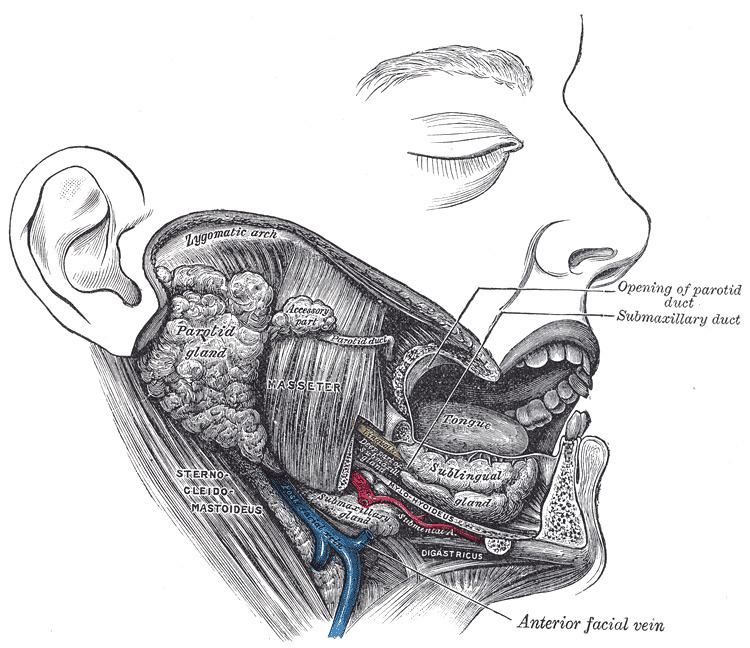Latin Ductus submaxillaris Dorlands/Elsevier d_29/12315123 FMA 86266 | MeSH A03.556.500.760.640 TA A05.1.02.012 | |
 | ||
The submandibular duct or Wharton duct or submaxillary duct, is one of the salivary excretory ducts. It is about 5 cm. long, and its wall is much thinner than that of the parotid duct. It drains saliva from each bilateral submandibular gland and sublingual gland to the sublingual caruncle at the base of the tongue.
Contents
Structure
It begins by numerous branches from the superficial surface of the gland, and runs forward between the mylohyoid, hyoglossus, and genioglossus muscles. It then passes between the sublingual gland and the genioglossus and opens by a narrow opening on the summit of a small papilla at the side of the frenulum of the tongue.
It lies superior to lingual and hypoglossal nerves.
Function
This is the duct from which a hungry person, preparing to take a first bite of food, might accidentally eject a spray of salivary fluid, or, alternatively, intentionally do so in a process called gleeking.
History
It was initially described by the English anatomist Thomas Wharton and is sometimes referred to by his name.
